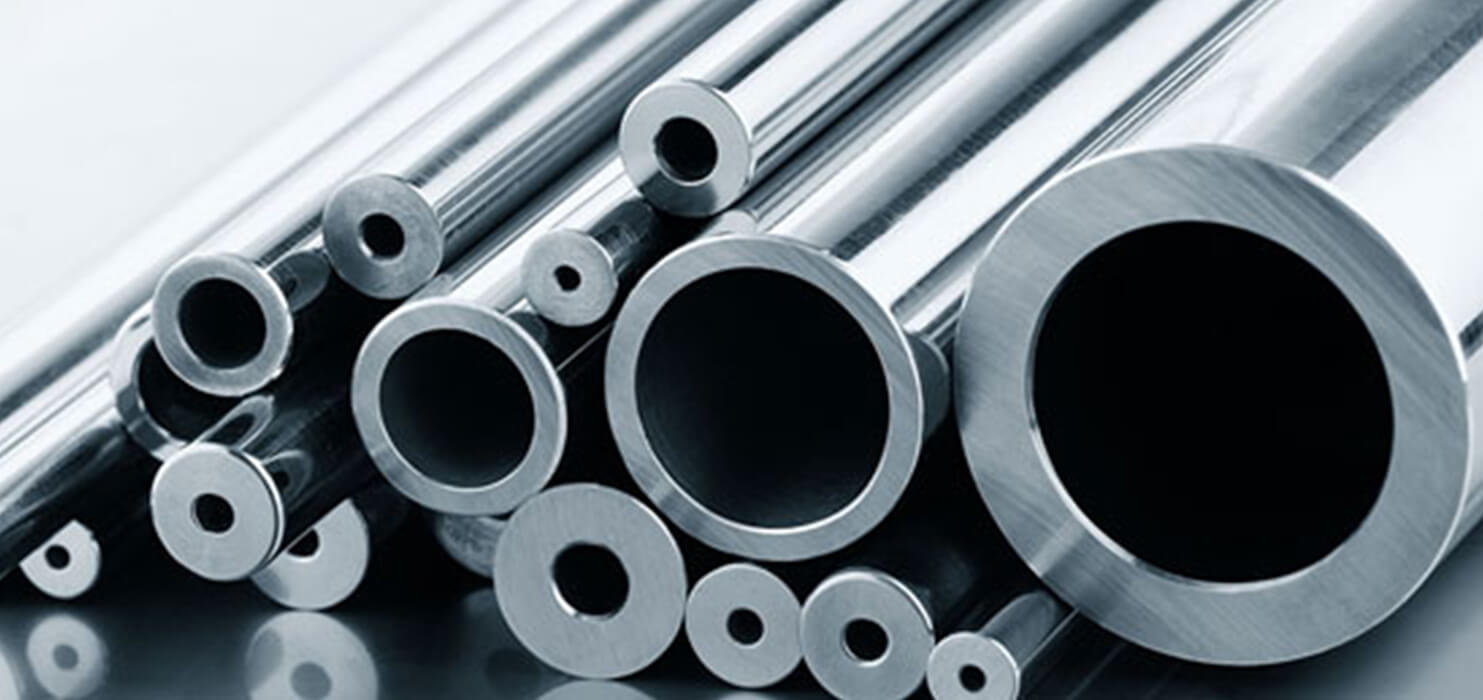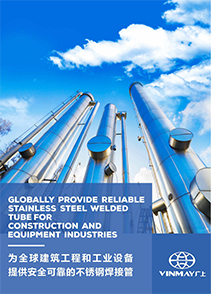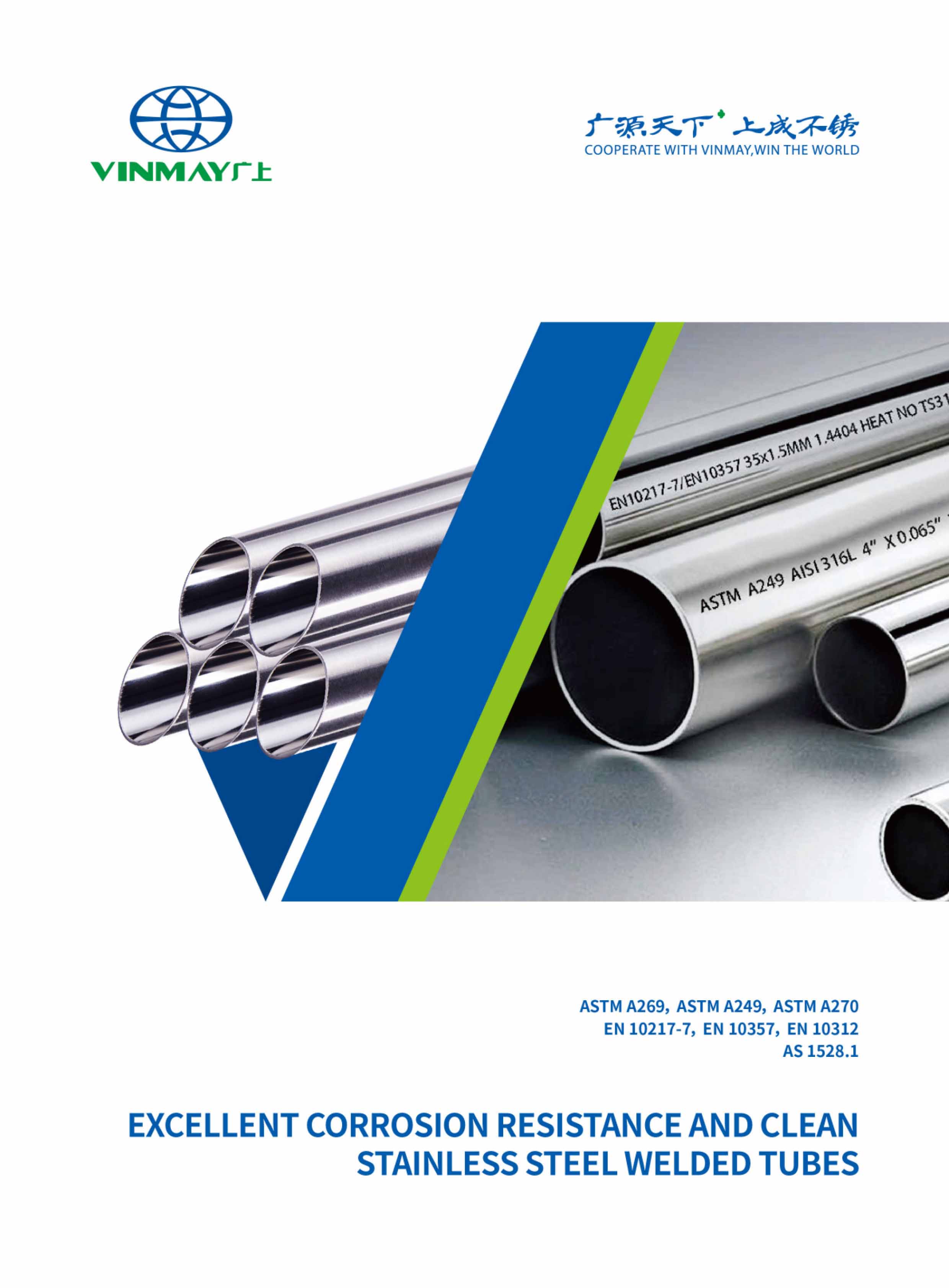When it comes to stainless steel round tubing, the grade 304 stainless steel round tubing variety stands out for its impeccable blend of corrosion resistance, durability, and aesthetic appeal. This type of stainless steel tube material is widely favored in industries where reliability and longevity are paramount.
Its chemical composition, surface finish options, and specific characteristics make it a go-to choice for various applications.
As we delve deeper into the nuances of 304 stainless steel round tubing, a wealth of information awaits on its unique properties, customization possibilities, and how it stacks up against other grades in the stainless steel tubing realm.

What is the precise chemical composition of 304 stainless steel, a widely utilized material known for its exceptional corrosion resistance and structural integrity in various applications?
Stainless steel 304 is primarily composed of 18% chromium and 8% nickel, providing excellent corrosion resistance properties. Additionally, it contains 0.08% carbon, 2% manganese, 1% silicon, 0.045% phosphorus, and 0.03% sulfur.
This composition contributes to its outstanding weldability, making it suitable for various welding processes without the need for filler metals.
Its machinability is fair, offering moderate cutting, forming, and machining capabilities. Moreover, the material's weldability is excellent, allowing for easy fabrication and customization in different applications.
Disover More:
What Is Food Grade 304 Stainless Steel?
Is 304 Stainless Steel Surgical Grade?
The characteristics of 304 stainless steel round tubing encompass its excellent welding properties, fair machining and grinding capabilities, good bending and forming attributes, excellent wear resistance, and superior corrosion resistance.
These features make it a reliable choice for various structural applications requiring durability and resistance to environmental factors. Understanding these characteristics is crucial for ensuring the optimal performance and longevity of stainless steel round tubing in different fabrication projects.
When considering the welding characteristics of stainless steel 304 welded round tube, it is essential to understand its outstanding weldability for standard fusion processes.
Stainless steel 304 is suitable for welding without filler metals.
Thin sections do not require post-welding annealing.
Stainless steel 304 can be heated to 1010-1120 degrees Celsius during heat treatment, but it cannot be hardened by thermal treatment. Welding safety considerations should always be adhered to, especially when dealing with high temperatures during the welding process.

Stainless Steel Tubing Welding 101: Tips for Success
Stainless Steel Pipe Welding Procedure Specification
The Difference of Stainless Steel Pipe TIG Welding and HF Welding
How to TIG Weld Stainless Steel Pipe ?
In the domain of machining and grinding stainless steel, achieving optimal results in a variety of industrial applications hinges on the paramount importance of precision and efficiency. Machining techniques and grinding processes play a crucial role in preparing the surface of stainless steel round tubing. Various tooling options are available to ensure the desired finish, ranging from rough to fine finishes. Surface preparation is key before starting the machining process to enhance the overall quality of the end product. Different finishing methods can be employed to meet specific requirements, ensuring that the stainless steel round tubing is ready for its intended application.
| Category | Description |
|---|---|
| Machining Techniques | Surface preparation |
| Grinding Processes | Tooling options |
| Finishing methods |
Precision in the bending and forming processes of stainless steel welded round tube is essential to ensure structural integrity and meet dimensional requirements for various industrial applications. When considering bending and forming stainless steel tubing, several key factors come into play:
These factors play a crucial role in achieving the desired shapes and stainless steel pipe dimensions while maintaining the material's inherent properties, such as corrosion resistance. Understanding these aspects is vital for fabricating stainless steel round tubing for a wide range of structural applications where durability and reliability are paramount.
Demonstrating exceptional resistance to wear, stainless steel round tubing exhibits superior durability in demanding industrial environments. Its abrasion resistance is notable, ensuring prolonged use without significant wear. Durability testing confirms its ability to withstand harsh conditions, making it a reliable choice for various applications.
The 304 stainless steel round tubing's friction protection properties contribute to its longevity and efficient performance. Additionally, surface coatings can be applied to enhance wear resistance further. The material's impact resistance is a key feature, providing added strength and protection against mechanical forces.
304 Stainless steel round tubing, known for its exceptional wear resistance in demanding industrial environments, also boasts remarkable corrosion resistance characteristics that make it a highly reliable choice for applications requiring prolonged durability in diverse settings.
Stainless steel's anti-corrosion coatings provide superior metal preservation, ensuring longevity and performance in challenging conditions. These properties make it an ideal material for a wide range of applications where protection against corrosion is essential for maintaining structural integrity and longevity.
You may also like:
Understanding Stainless Steel Tube Corrosion and How to Prevent It
In the realm of heat treatment processes for stainless steel, understanding the characteristics is paramount for ensuring optimal performance and longevity in various industrial applications. Stainless steel, such as grade 304, benefits from thermal treatment by enhancing its heat resistance properties, crucial for high-temperature applications.
The annealing process, where the material is heated to 1010-1120 degrees Celsius and then rapidly cooled, plays a vital role in achieving the desired properties. Despite not being able to be hardened by thermal treatment, rapid cooling techniques are implemented to establish high strength and durability in stainless steel pipes.
This process is essential in the manufacturing of stainless steel tube for heat exchanger .

The type of 304 stainless steel round tubing includes both seamless and welded options. Seamless round 304 stainless steel tubing offers a smooth interior and exterior surface, ideal for applications that require high corrosion resistance.
On the other hand, welded 304 stainless steel round tubing is suitable for structural applications that do not require a seamless finish.
Seamless stainless steel round tubes play a crucial role in various industries due to their exceptional properties and versatile applications. These tubes are manufactured using advanced production methods, ensuring a high-quality and durable product. Let's delve into the application and production methods of seamless stainless steel round tubes.
2. Chemical and Petrochemical Industry: The resistance of stainless steel to corrosion and high temperatures makes it a preferred choice in the chemical and petrochemical sectors. Seamless tubes are employed for transporting corrosive fluids and handling extreme conditions.
3. Automotive Sector: Stainless steel tubes find application in the automotive industry, particularly in exhaust systems. The tubes' resistance to corrosion and ability to withstand high temperatures make them suitable for this demanding environment.
4. Construction and Architecture: Seamless stainless steel round tubes are commonly used in construction for structural elements and architectural applications. Their aesthetic appeal, strength, and corrosion resistance contribute to the longevity of buildings and structures.
5. Food and Beverage Industry: Hygiene is crucial in the food and beverage industry, and stainless steel's non-reactive nature makes it an ideal material for tubes used in the transportation of liquids and gases. Seamless tubes are often employed in processing and packaging equipment.
6. Energy Sector: In the energy industry, seamless stainless steel tubes are utilized for transporting fluids and gases in both traditional and renewable energy applications. Their resistance to corrosion is essential for maintaining efficiency and safety.
2.Rotary Piercing: In this method, a solid billet is rotated while a piercing point deforms and pierces the center, creating a hollow tube. The tube is then elongated and reduced in size through subsequent processes, ensuring a smooth and seamless surface.
3. Pilgering: Pilgering involves reducing the diameter and thickness of the tube through a rolling process. This method imparts a high degree of precision and surface finish to the seamless stainless steel round tube.
4. Heat Treatment: Following the initial forming processes, seamless tubes undergo heat treatment to enhance their mechanical properties. This step helps achieve the desired strength, hardness, and corrosion resistance.
Seamless stainless steel round tubes, with their remarkable properties and precise production methods, continue to be an integral component in a wide range of industries, contributing to the efficiency and longevity of various applications.

Stainless steel welded tubes are essential for their strength, corrosion resistance, and suitability across diverse industries.

The stainless steel tube standards for ASTM A554 304 stainless steel round tubing, ASTM A270 304 stainless steel round tubing, and ASTM A249 A269 stainless steel round tubing are key points to consider. These standards ensure the tubing meets specific criteria for quality, durability, and performance in various applications.
Understanding these specifications is essential for selecting the appropriate stainless steel round tubing for structural or fabrication projects.
Conforming to ASTM A554 specifications, the 304 stainless steel round tubing exhibits exceptional strength, corrosion resistance, and durability suitable for a wide range of structural applications. This type of tubing offers excellent corrosion resistance, making it ideal for challenging environments.
When it comes to welding techniques, the ASTM A554 304 stainless steel round tubing is known for its ease of welding, allowing for efficient fabrication processes. Additionally, this tubing provides various surface finish options, enabling customization to meet specific project requirements while maintaining its mechanical properties for structural integrity.
ASTM A270 304 stainless steel round tubing specifications detail the precise standards and requirements for this particular type of stainless steel tubing commonly used in various industries.
Known for its excellent corrosion resistance, ASTM A270 304 tubing offers versatility in welding techniques and customization options.
The mechanical properties of this tubing, including a tensile strength of 85,800 psi and a yield point of 34,000 psi, make it suitable for a wide range of fabrication applications.
Whether used in structural projects or for specific fabrication needs, ASTM A270 304 stainless steel round tubing provides reliable performance and durability.
Its corrosion resistance, coupled with customizable features, makes it a preferred choice for various industrial applications.
Specifications for stainless steel round tubing designated under ASTM A249 A269 encompass precise standards and requirements crucial for its industrial applications. These specifications ensure consistency and quality in the manufacturing process, meeting the demands of various industries. Key points include:
Adhering to these specifications guarantees the reliability, durability, and performance of stainless steel round tubing in diverse industrial settings.
Varied stainless steel round tube sizes are available to cater to a wide range of fabrication needs and project requirements. These stainless steel round tubes come in different dimensions, offering various material properties, weight options, and customization possibilities. Below is a table showcasing a selection of sizes, weights, and materials commonly available for stainless steel round tubes:
| Tube Sizes | Weight Options (lb/ft) | Materials |
|---|---|---|
| 8 Ft. | 0.65 | 304 Stainless Round Tube |
| 10 Ft. | 1.13 | 304 Stainless A511 Seamless Round Tube |
| 20 Ft. | 1.90 | 304 Stainless Round Tube - POLISHED 180 Grit |
These options provide flexibility for different project requirements, with the availability of custom cutting services to meet specific needs. Stainless steel round tubes offer a durable and corrosion-resistant solution for various applications, ensuring structural integrity and reliability.
Click to know more about the stainless steel round size list
The surface finish of 304 stainless steel round tubing plays a crucial role in determining its aesthetic appeal and functionality. Options such as a polished, mill finish, or satin finish provide distinct appearances and levels of corrosion resistance.
Each finish type caters to different applications, ensuring that the tubing meets specific requirements for various projects.
Polish multipurpose 304 stainless steel round tubing exhibits a versatile surface finish suitable for a range of applications requiring durability and aesthetic appeal. This polished finish offers:
The seamless options available further enhance the tubing's aesthetic appeal while maintaining its mechanical strength. This surface finish not only provides excellent wear and corrosion resistance but also allows for easy maintenance and cleaning.
Whether used in architectural, industrial, or decorative applications, the polished multipurpose 304 stainless steel round tubing offers a combination of functionality and visual appeal that meets the diverse needs of different projects.
With a focus on the surface finish of mill-finished 304 stainless steel round tubing, this aspect plays a crucial role in enhancing both the aesthetic appeal and durability of the tubing for a variety of applications. The table below highlights key aspects of mill finish 304 stainless steel round tubing:
| Aspect | Description | Importance |
|---|---|---|
| Corrosion Resistance | Excellent resistance to corrosion | Ensures longevity |
| Welding Techniques | Suitable for various welding methods | Facilitates fabrication |
| Customization Options | Easily customizable for specific needs | Enhances versatility |
Mill-finished 304 stainless steel round tubing offers exceptional mechanical properties, making it ideal for industries requiring corrosion resistance like food processing, marine, and chemical. Its surface finish allows for easy customization and reliable performance in various applications.
In the realm of stainless steel tubing finishes, the satin finish on 304 stainless steel round tubing provides a distinct combination of aesthetic appeal and functional durability. This finish option is achieved through meticulous polishing methods, enhancing the material's overall look and feel.
When it comes to welding techniques, the satin finish 304 stainless steel round tubing maintains excellent weldability, allowing for seamless integration into various projects. Moreover, this surface finish offers exceptional corrosion resistance properties, making it ideal for applications exposed to challenging environments.
The satin finish not only elevates the tubing's appearance but also ensures long-term performance and reliability.
Learn More:
Comprehensive Guide to Stainless Steel Tube Surface Finishes
Comparisons of hairline finish, brushed finish and satin finish stainless steel tube
Other grades of stainless steel round tubes include 201, 316, 317, 309, and 310. Each of these grades offers unique properties and is suitable for specific applications based on their corrosion resistance, strength, and durability characteristics.
Understanding the differences between these stainless steel grades is crucial for selecting the most appropriate material for various fabrication projects.
What Is the Difference Between 201 and 304 Stainless Steel?
In high-temperature applications, stainless steel round tubing excels with its exceptional heat and corrosion resistance, ensuring durability and strength. The choice between seamless and welded tubes impacts strength and welding considerations. Consider material properties, cost, longevity, and maintenance for informed decisions.
Advantages of seamless stainless steel round tubes over welded ones include superior durability, corrosion resistance, and strength. Their seamless construction enhances aesthetic appeal and ensures precision engineering for versatile applications. Seamless tubes offer longevity and optimal performance in various settings.
When welding stainless steel round tubing, consider welding techniques for optimal joint strength, surface finish for corrosion resistance, heat distortion to prevent warping, appropriate filler materials for compatibility, and joint design for structural integrity.
When comparing the stainless steel round tube price with grades, consider factors like corrosion resistance, surface finish, material composition, and durability. Assessing these aspects ensures an informed decision on the cost-effectiveness and performance of 304 stainless steel tubing against alternatives.
Proper cleaning, rust prevention, and inspection procedures are crucial for ensuring longevity and performance of stainless steel tubing. Maintaining corrosion resistance through regular cleaning, applying protective coatings, and monitoring surface finish are essential practices.
Unveiling the Versatility and Superiority of 304 Stainless Steel Rectangular Tube
Mastering 304 Stainless Steel Square Tubing: Complete Guide
Foshan Vinmay Stainless Steel Co.,ltd has been one of the leading stainless steel welded tubes manufacturer in China since 2008. We offer a comprehensive range of tubes and pipes according to the international standards. We provide 304 stainless steel round tubing apply in building and construction, food industry , water supply system and heat treatment . We strive for perfectly realizing your business through production, polishing, assembly, inspection, delivery. If you are looking for 304 stainless steel pipe supplier , please contact us .
In conclusion, 304 stainless steel round tubing offers exceptional corrosion resistance and durability due to its chemical composition. With a chromium and nickel content of 18% and 8% respectively, this tubing is ideal for various applications in industries requiring high-quality structural materials.
Interestingly, 304 stainless steel round tubing is capable of withstanding temperatures up to 1700°F, making it a versatile and reliable choice for fabrication projects.



